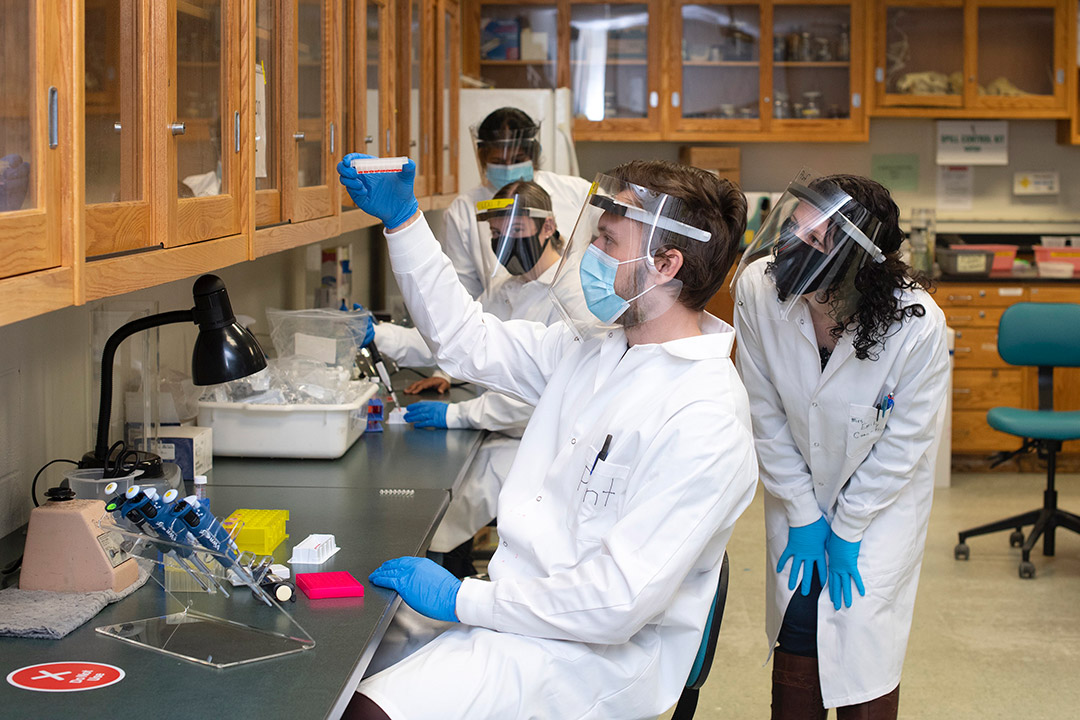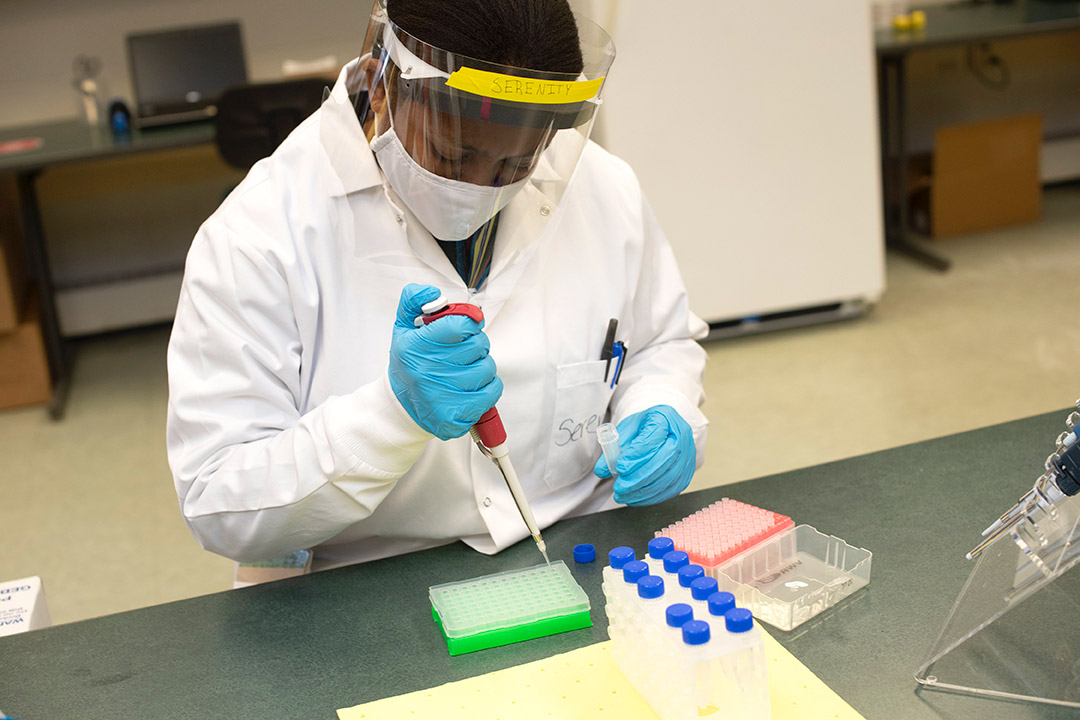Faculty, students innovate when plans for saliva testing changed
Team coordinating testing shifts to research, developing lab activities, and behind-the-scenes information about testing processes
A. Sue Weisler
Emily Coon-Frisch, School of Life Sciences adjunct faculty, right, works with Pent Eistrat, a fourth-year biomedical science student from Toronto, on reagents used for COVID-19 testing. They were part of a faculty-student team that prepared to support saliva testing on campus. When plans changed, they designed new lab activities that would be integrated into biology curriculum based on that work.
Once RIT secured enough antigen tests for students for the spring semester, plans for administering saliva tests were put on hold. But this did not stop faculty and students in RIT’s College of Science from creating a Plan B of new lab activities, research, and community outreach.
Prior to spring semester, the university’s COVID task force teams began estimating testing needs and considered providing saliva testing. Professor Andre Hudson, head of the Thomas H. Gosnell School of Life Sciences; Julie Thomas, associate professor; Narayan Wong, genomics technician; and adjunct faculty members Emily Coon-Frisch and Seema Thomas recruited 19 students within the school as laboratory assistants.
A. Sue Weisler
Serenity Ross, first-year environmental science student from New York City, was one of 19 students recruited to help develop RIT’s saliva testing initiative. Plans changed as the university secured enough antigen tests to use for the spring semester.
The group, which had retrofitted a classroom into a science lab before the spring semester, began researching effects of reagents on different concentrations of the virus, focusing on detection of COVID at its earliest symptoms.
“Many people with symptoms are going for COVID testing, but they may not know what is going on at the test labs, and we wanted show how the testing is being done. The students had good exposure on how to do this work and how to explain it to others,” said Seema Thomas. Her students developed a video of the lab processes and it was featured at the recent Imagine RIT Festival.
The team also developed curriculum models to be used in a laboratory classroom based on the saliva COVID testing protocols. As part of the curriculum, the team made a pre-lab PowerPoint and a video that will be used in future introductory biology labs. They expanded this work to new lab activities using the reagents to verify genetically modified foods such as corn. Once completed, their work can be presented at a conference or published in a journal, Coon-Frisch added.
“This was a really fun project, and I just let them run with it,” she said.
Hudson compared the development process to building a plane and learning to fly at the same time. The original plans changed, but the group shifted, and learned. If there is a next time, he said, we will be ready. The team has the know-how, experience, and established partnerships with various campus groups such as procurement, Information and Technology Services, and Student Health, for example.
“Experience has helped us in that regard,” said Hudson. “As an institution, we are known to be innovative. One of the best things we can do as scientists is to teach our students that part of what we do is have agility. A lot of what we are going to encounter in the future is the unknown, and we need to have the requisite skills, knowledge, enthusiasm and passion to address future challenges – you kind of have to be fearless.”
Tiger Testing
The campus’ spring semester COVID-19 dashboard indicates a positivity rate that remains low, and since the start of the spring semester (Jan. 25) all students are being tested weekly with a high compliance rate. In addition to administering rapid tests onsite for students, the university continued its regular surveillance testing of the campus wastewater system.









